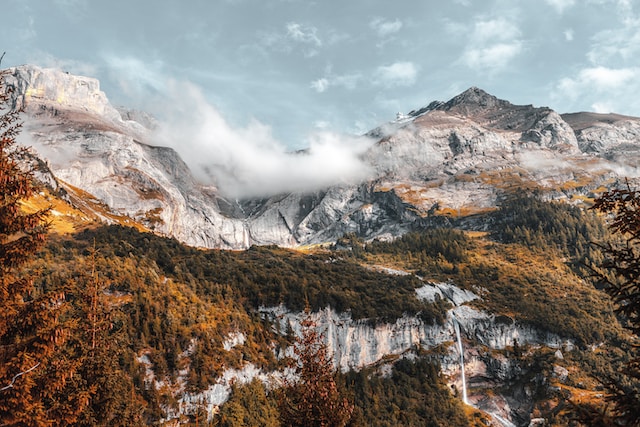
When weather intermingles with the natural world, a dance begins, and the result is a breathtaking display of natural drama. The ever-shifting tapestry of weather bestows landscape photographers an opportunity—a chance to capture in film these transient moments of breathtaking beauty, transporting viewers into a realm where the ordinary is elevated to the extraordinary. Whether it be the vibrant colors that emerge after a storm, the ethereal mist that blankets a valley at sunrise, or the piercing rays of sunlight breaking through ominous clouds, the influence of weather in landscape photography cannot be overstated.
To capture the dramatic effects of weather in landscape photography is to seize a moment in time, to encapsulate the raw emotion and power that mother nature displays. It requires patience, skill, and a keen understanding of the interplay between light and shadow, textures and colors. A successful photograph becomes a testament to the photographer’s ability to anticipate and capture these untamed, yet captivating, moments.
When telling a story through landscapes, weather acts as both a challenge and a muse. It compels artists to venture forth, to chase the ever-elusive confluence of light, clouds, and land. It urges us to explore beyond our comfort zones, to wander the vast expanse of the natural world in search of that perfect moment when the elements align. Through the lens of weather, we witness not only nature’s splendor but also the resilience of the earth. We see the ever-changing landscapes as a testament to the cyclical nature of life and its unyielding spirit.
Weather as a Mood Creator
Weather in landscape photography serves as a powerful tool for creating mood and atmosphere. The ever-changing conditions in the sky can evoke a wide range of emotions, from tranquility to excitement, from awe to melancholy.
Rain and Storms
When the heavens open up and rain begins to fall, a whole new world of opportunity opens up for landscape photographers. Rain and storms bring with them a sense of dynamic energy, transforming the ordinary into scenes of captivating allure.
The Beauty of Rainfall
The gently falling rain can create a serene atmosphere, bringing a sense of tranquility and renewal to a scene. The soft patter of raindrops on leaves and petals can enhance the sensory experience of a photograph, transporting viewers into the very heart of nature’s embrace.
Capturing the Delicate: Raindrops clinging to delicate flowers or leaves can provide a macro wonderland for photographers. The intricate patterns formed by the droplets can create a mesmerizing focal point, drawing the viewer’s eye into the minute details of nature’s design.
Embracing Reflections: When rain falls upon still bodies of water, it gifts photographers with a natural canvas for reflections. The mirror-like surfaces created by raindrops add depth and dimension to a landscape, offering a new perspective that amplifies its beauty. Whether it be a tranquil lake or a bustling city street, the reflections captured in the rain can transform a simple scene into a work of art.
The Drama of Storms:
A storm brewing in the distance can introduce an element of drama and anticipation to any landscape photograph.
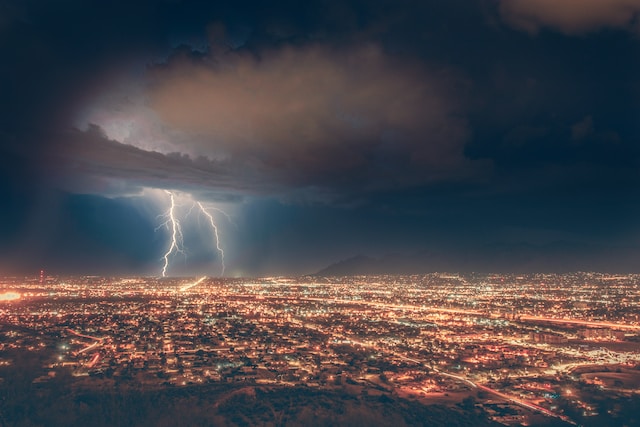
As billowing clouds gather and lightning streaks across the sky, photographers are presented with an opportunity to capture the raw power of nature in its most electrifying form.
Striking Compositions: Storm clouds, with their rich palette of grays and blues, can become the backdrop against which landscapes are etched. The play between light and shadow during a storm can create breathtaking contrasts, highlighting the contours and textures of the land in surprising ways. Using the dynamic nature of storms, photographers can experiment with composition and perspective to capture unique and awe-inspiring images.
The Dance of Light: Amidst a storm, moments of dramatic lighting can pierce through the darkened clouds, illuminating portions of the landscape with ethereal rays. These fleeting moments of light can create mesmerizing accents, directing the viewer’s gaze towards specific elements within the frame and infusing the photograph with an otherworldly quality.
The Mystique of Fog and Mist
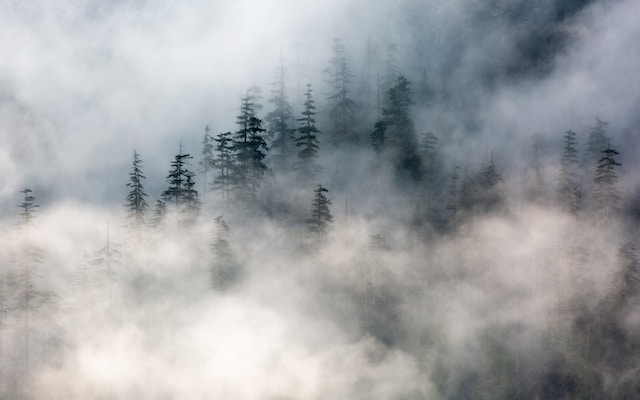
When fog and mist descend upon the land, nature takes on a veil of mystery and intrigue. The soft, diffuse light that filters through these atmospheric conditions creates a dreamlike quality, revealing hidden details and textures that are often overlooked.
Capturing Depth and Scale: Fog and mist can create the illusion of depth and scale in a photograph. As layers of mist recede into the distance, they add a sense of depth to the composition, drawing the viewer’s gaze deeper into the landscape. This visual effect can lend a mysterious and otherworldly atmosphere to the image, evoking a sense of wonder and discovery.
Unveiling Ethereal Landscapes: When fog and mist clothe the land, they reveal a world that exists between reality and fantasy. The obscuring of distant elements creates a sense of distance and elusiveness, while foreground details become more pronounced. This interplay between foreground and background layers allows photographers to capture scenes that are both ethereal and grounded in reality, creating a captivating juxtaposition.
Embracing Minimalism: Fog and mist can simplify a landscape, stripping away unnecessary elements and leaving behind only the essence of the scene. This minimalist approach allows photographers to focus on the fundamental elements of composition: lines, shapes, and textures. By embracing simplicity, photographers can create evocative images that convey a sense of tranquility and stillness.
Creating Atmosphere: The atmospheric conditions created by fog and mist can greatly impact the overall mood of a photograph. Depending on the density and thickness of the fog, the atmosphere can range from serene and mysterious to eerie and haunting. By manipulating exposure settings and composition techniques, photographers can effectively convey the desired atmosphere and evoke specific emotions in their viewers.
The Enchanting Beauty of Snow and Winter Landscapes
When snow carpets the land, it imbues the landscape with a sense of calmness and tranquility. The pure white expanse evokes a stillness that invites reflection and introspection. Compositions of snow-covered forests, mountains, and fields can exude a sense of peaceful solitude, transporting viewers to a realm where time seems to stand still.
Each snowflake is a unique work of art, and when meticulously captured, they can add a touch of intricate beauty to a photograph. Macro photography allows photographers to explore the delicate details of individual snowflakes, unveiling their mesmerizing patterns and shapes.
The absence of vibrant colors in a winter landscape allows photographers to focus on the contrasting elements of texture, shape, and form. The interplay between shadows and highlights in the snowy expanse creates a visual symphony, where every line and curve becomes accentuated, giving the photograph a sense of depth and dimension.
The Delights of Winter Light
Winter light has a distinctive quality that is softer and more diffused, casting a subtle glow upon the landscape. The lower angle of the sun produces long shadows that stretch across snow-covered fields, adding depth and drama to the composition.
During the winter months, the golden hour takes on a magical quality. The warm hues of sunrise and sunset juxtaposed against the cool tones of a snowy landscape create a stunning contrast, infusing the photograph with warmth and a sense of coziness.
As daylight fades and twilight sets in, a serene stillness settles over the land. The soft blue and lavender tones that grace the winter sky can lend an ethereal quality to a photograph, creating a dreamlike ambiance that captivates the imagination.
EMBRACING WINTER ELEMENTS
Within the winter landscape lie captivating elements waiting to be explored and captured. When lakes freeze over, they provide photographers with an opportunity to capture mesmerizing reflections. The mirror-like surfaces create a sense of symmetry, doubling the impact of the scene and allowing viewers to experience the beauty of both above and below the icy facade.
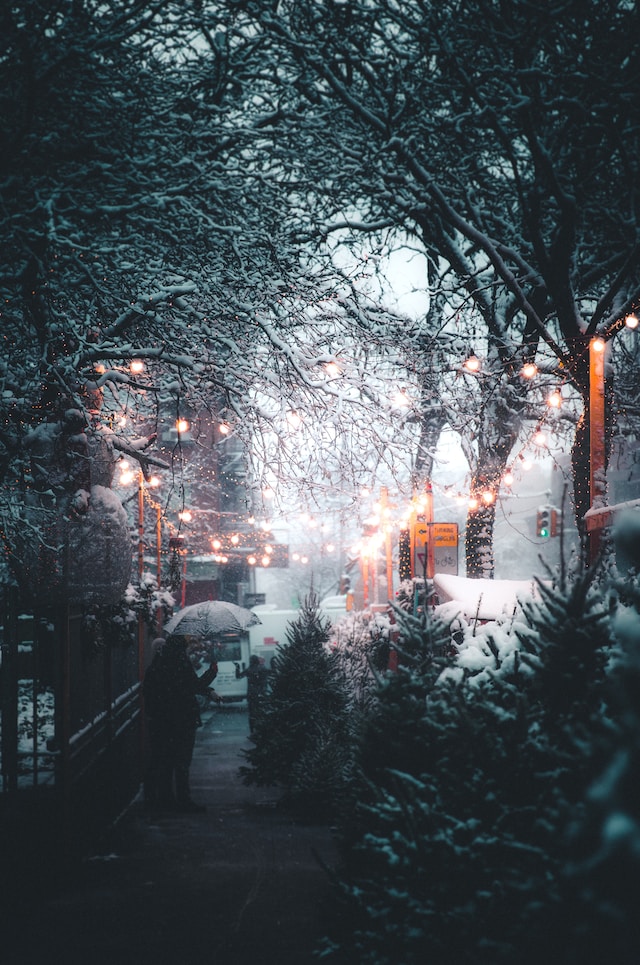
From delicate frost patterns on windows to jagged icicles hanging from eaves, the textures of winter are visually captivating. These intricate details can be isolated and highlighted through close-up photography, revealing the mesmerizing geometric shapes and delicate formations that occur in the cold embrace of winter.
Dust and Sandstorms
Dust and sandstorms are another example of the influence of weather in landscape photography. The raw power and beauty of these natural phenomena offer landscape photographers a unique opportunity to capture moments of chaos and transformation.
Duststorms bring an element of chaos to the landscape, creating a dramatic and ever-changing canvas for photographers. The swirling dust particles intertwine with light, casting an ethereal glow upon the land. Through careful composition and framing, photographers can capture the essence of this dance, conveying the raw energy and power of nature in motion.
Sandstorms bring with them a sense of raw power and intensity. The swirling clouds of sand obscure the landscape, reducing visibility and transforming familiar surroundings into an alien world. Photographers can harness this otherworldly atmosphere, capturing the ephemeral beauty that emerges amidst the chaos. The contrast between the soft, undulating dunes and the turbulent fury of the storm creates a captivating juxtaposition that evokes a range of emotions in the viewer.
Challenges and Rewards of Shooting in Varied Weather
The ever-changing weather presents both challenges and rewards for landscape photographers. From scorching heat to biting cold, from torrential rain to howling gales, each weather condition brings a unique set of obstacles and opportunities.
Heatwaves
Protecting Yourself and Your Gear: Working in extreme heat requires proper preparation to safeguard both yourself and your photography equipment. Hydrate regularly, wear light and breathable clothing, and use sunscreen to protect your skin. Similarly, consider using lens hoods, filters, and lens cloths to shield your gear from excessive heat and potential damage.
Capturing Vibrant Colors: Heatwaves often bring vibrant and intense colors to the landscape. The sun’s rays create a warm and saturated palette, enhancing the details and textures of the scenery. Photographers can use this opportunity to capture stunning landscapes with vivid hues and contrasting tones.
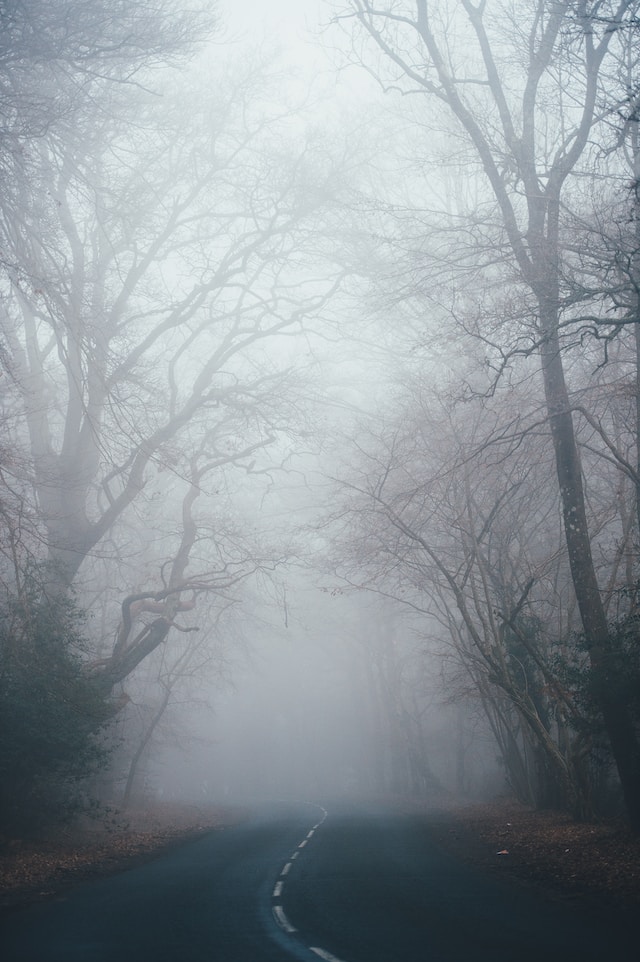
Rain or Shine
Weatherproofing Your Gear: When shooting in rainy or wet conditions, ensure your equipment is properly protected. Use rain covers, lens hoods, and lens wipes to shield your gear from water damage. Additionally, consider having a sturdy tripod or an umbrella to provide stability and keep yourself and your camera dry.
Embracing Dramatic Lighting: Rainy and stormy weather often brings with it dramatic lighting conditions.
The interplay between light and shadow can create captivating compositions and add depth to your photographs. Look for opportunities to capture the contrast between dark storm clouds and bright bursts of sunlight, creating dynamic and atmospheric images.
Snowfall
Battling the Cold: Winter landscapes covered in pristine snow offer photographers a serene and ethereal canvas. However, shooting in cold conditions requires careful preparation. Dress in layers, use hand warmers, and protect your camera and batteries from the cold. Familiarize yourself with the symptoms of cold-related illnesses and take regular breaks to warm up.
The simplicity of a snow-covered landscape lends itself well to minimalist compositions. Embrace the clean lines, geometric patterns, and uncluttered scenes that winter affords. By focusing on fewer elements, photographers can create images that evoke a sense of peace, tranquility, and stillness.
Windy Days
Stabilizing Your Camera: Shooting in strong winds can be challenging, as it introduces camera shake. Use a sturdy tripod or consider using sandbags or other weights to stabilize your camera. Experiment with faster shutter speeds to freeze motion and capture the dynamic energy of wind-blown elements.
Windy conditions provide an opportunity to capture movement and create dynamic compositions. Experiment with long exposures to capture the graceful motion of windblown grasses or the swirling patterns created by gusts of wind. This technique adds a sense of energy and playfulness to your photographs.
Photographing in varied weather conditions presents both challenges and rewards for landscape photographers. By understanding and adapting to the specific demands of weather in landscape photography, photographers can create compelling images that capture the essence of nature’s ever-changing moods. From embracing the sun’s fury to seeking out opportunities in rain, snow, and wind, the challenges faced become valuable lessons that ultimately enhance the reward of capturing stunning and evocative landscapes. So, embrace the weather, adapt to its whims, and let nature guide you on a captivating photographic journey.